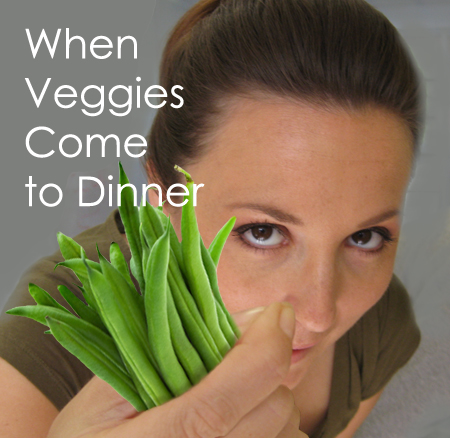 The “When Veggies Come to Dinner” Series
The “When Veggies Come to Dinner” Series
Part 1: Vegetarians (lacto-ovo), Pescatarians and Flexitarians
Part 2: Vegans, Raw Vegans
Part 3: Tips for Feeding and Understanding Your Veggie Friends and Family
Welcome back to the “When Veggies Come to Dinner” series. This series is written for those that are new to vegetarianism, for the vegetarian curious and for friends and family that have a vegetarian in their life. Part 1 and 2 gave you definitions of the different veggie diets, the types of foods that they do and do not eat, lists of “sneaky” ingredients and meal and restaurant suggestions. In Part 3, I’ll give you some additional tips for sharing a meal with the veggies in your life. As always, please feel free to ask questions in the comments section below.
PART 3: TIPS FOR FEEDING AND UNDERSTANDING YOUR VEGGIE FRIENDS AND FAMILY
- Vegetarian does not always equal healthy. Cheese fries and milkshakes are vegetarian and they can be a yummy treat every now and then but you’ll want to check with your veggie friend to see if they eat these items.
- This has come up before, so I’ll say here, just in case…chicken is a meat, vegetarians don’t eat it.
- If you cook a meal that has meat in it and ask us to just eat around it, we’ll probably get cranky. But many of us are willing to work with you, if you’ve got an entire meal focused around meat, serve some bread and a hearty salad and we’ll make it work.
- Please use separate pots and pans to cook meat in. An easy solution is to cook veggies first then put them in the microwave or oven to stay warm while cooking meat in same pan. A common example is spaghetti sauce. If you like to cook the meatballs in the sauce, ladle out enough plain sauce for a serving or two, then put the meatballs in. Everybody wins!
- Please don’t sneak meat into a recipe. Just because we don’t notice at the time, it doesn’t mean we won’t later. Once you stop eating meat, your body eventually has trouble digesting meat protein and it will give us a very upset stomach.

